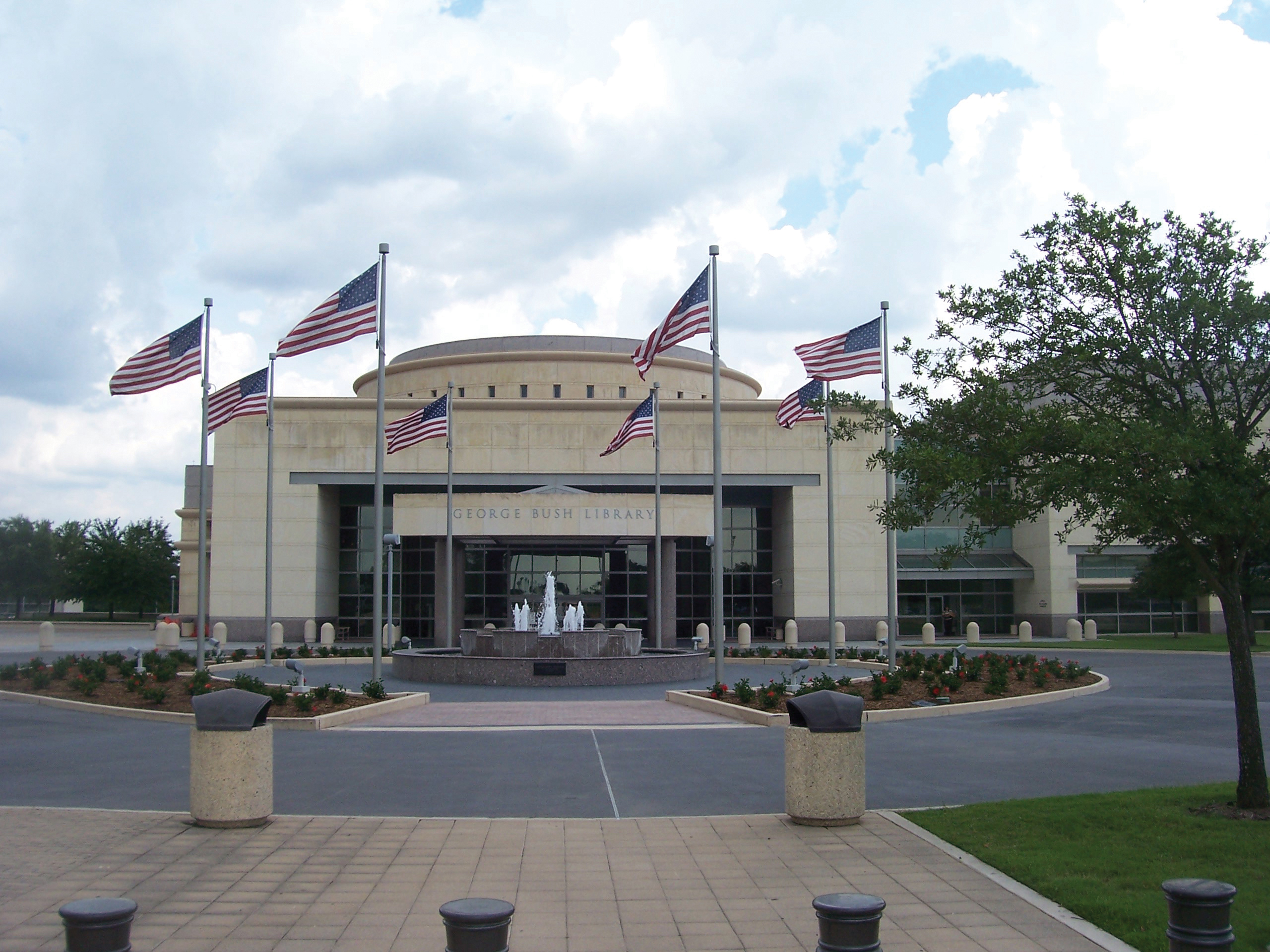Roof leaks can be a museum’s worst enemy, threatening water damage to artifacts and disturbing delicately controlled indoor environments. That’s why an $8.3 million renovation to the core exhibits at the George H.W. Bush Presidential Library and Museum in 2007 was done in parallel with fixing approximately 75,000-sf of the flat, spray-applied polyurethane foam (SPF) roof that had provided almost 10 years of service.
“We were redoing the core exhibit so I thought it was a good time to check the roof,” explains Robert Spacek, Facility Operations Specialist for the George H.W. Bush Presidential Library and Museum.
The original roof was a foam and silicone-coated system. Although SPF roofs can often last 20 years or more, and are renewable indefinitely with simple recoats every 10-15 years, this one was showing some wear and tear. As part of the renovation, there was talk of tearing off the existing roof and replacing it with another solution. This option, however, would be extremely expensive and time-consuming. Plus, the artifacts and records would have had to be moved and the building closed to the public during renovations.
“This particular roof was still in excellent shape and performing well. There was nothing wrong with the base foam roofing insulation,” explains John Austin, Vice President of Spray Polyurethane Foam and Coatings for F.W. Walton Inc., the contractor on the project. “But there were some leaks related to the rotunda and control joints in the windows, and membrane repairs were ineffective to prevent those roof leaks.”
Spacek made a request to the National Archives and Records Administration (NARA) for funding for the roofing project. The NARA architects were subsequently asked to research the cost of replacing the entire roof. After consulting with BASF technical experts, it was discovered that only certain parts needed minor repairs, so a tear-off and replacement could be avoided.
Once the project was approved, the bid went to Houston-based F.W. Walton, Inc. Having found the root of the problem, Austin used ELASTOSPRAY SPF from BASF to perform minor repairs on various parts of the existing roof, followed by a recoat of the entire roof to provide a consistent and fresh aesthetic appeal. This renewal would continue to deliver on the energy savings inherent in SPF roofing systems, prolong the life expectancy of the original roof and provide a quick installation with minimal disruption. All at a far reduced cost compared with a tear off and replacement. Plus, it would divert a lot of waste from landfills.
For more information, contact:
BASF Corporation
100 Park Avenue
Florham Park, NJ 07932
info@basfconstruction.us
construction.basf.us
And thanks to the decision to repair and recoat the original roof, the work didn’t inconvenience the public or expose artifacts to the elements.
“We didn’t have to change anything,” says Spacek, who adds that it was his first big job with this type of roofing system. “Things went really well. The contractor was very easy to get along with. In all honesty, I didn’t understand a lot about this stuff until I started this job. I am very pleased with the results. It has been a very satisfactory experience for me.” +
Related Stories
Market Data | Apr 1, 2024
Nonresidential construction spending dips 1.0% in February, reaches $1.179 trillion
National nonresidential construction spending declined 1.0% in February, according to an Associated Builders and Contractors analysis of data published today by the U.S. Census Bureau. On a seasonally adjusted annualized basis, nonresidential spending totaled $1.179 trillion.
Affordable Housing | Apr 1, 2024
Biden Administration considers ways to influence local housing regulations
The Biden Administration is considering how to spur more affordable housing construction with strategies to influence reform of local housing regulations.
Affordable Housing | Apr 1, 2024
Chicago voters nix ‘mansion tax’ to fund efforts to reduce homelessness
Chicago voters in March rejected a proposed “mansion tax” that would have funded efforts to reduce homelessness in the city.
Standards | Apr 1, 2024
New technical bulletin covers window opening control devices
A new technical bulletin clarifies the definition of a window opening control device (WOCD) to promote greater understanding of the role of WOCDs and provide an understanding of a WOCD’s function.
Adaptive Reuse | Mar 30, 2024
Hotel vs. office: Different challenges in commercial to residential conversions
In the midst of a national housing shortage, developers are examining the viability of commercial to residential conversions as a solution to both problems.
Sustainability | Mar 29, 2024
Demystifying carbon offsets vs direct reductions
Chris Forney, Principal, Brightworks Sustainability, and Rob Atkinson, Senior Project Manager, IA Interior Architects, share the misconceptions about carbon offsets and identify opportunities for realizing a carbon-neutral building portfolio.
Reconstruction & Renovation | Mar 28, 2024
Longwood Gardens reimagines its horticulture experience with 17-acre conservatory
Longwood Gardens announced this week that Longwood Reimagined: A New Garden Experience, the most ambitious revitalization in a century of America’s greatest center for horticultural display, will open to the public on November 22, 2024.
Office Buildings | Mar 27, 2024
A new Singapore office campus inaugurates the Jurong Innovation District, a business park located in a tropical rainforest
Surbana Jurong, an urban, infrastructure and managed services consulting firm, recently opened its new headquarters in Singapore. Surbana Jurong Campus inaugurates the Jurong Innovation District, a business park set in a tropical rainforest.
Cultural Facilities | Mar 27, 2024
Kansas City’s new Sobela Ocean Aquarium home to nearly 8,000 animals in 34 habitats
Kansas City’s new Sobela Ocean Aquarium is a world-class facility home to nearly 8,000 animals in 34 habitats ranging from small tanks to a giant 400,000-gallon shark tank.
Market Data | Mar 26, 2024
Architecture firm billings see modest easing in February
Architecture firm billings continued to decline in February, with an AIA/Deltek Architecture Billings Index (ABI) score of 49.5 for the month. However, February’s score marks the most modest easing in billings since July 2023 and suggests that the recent slowdown may be receding.

















